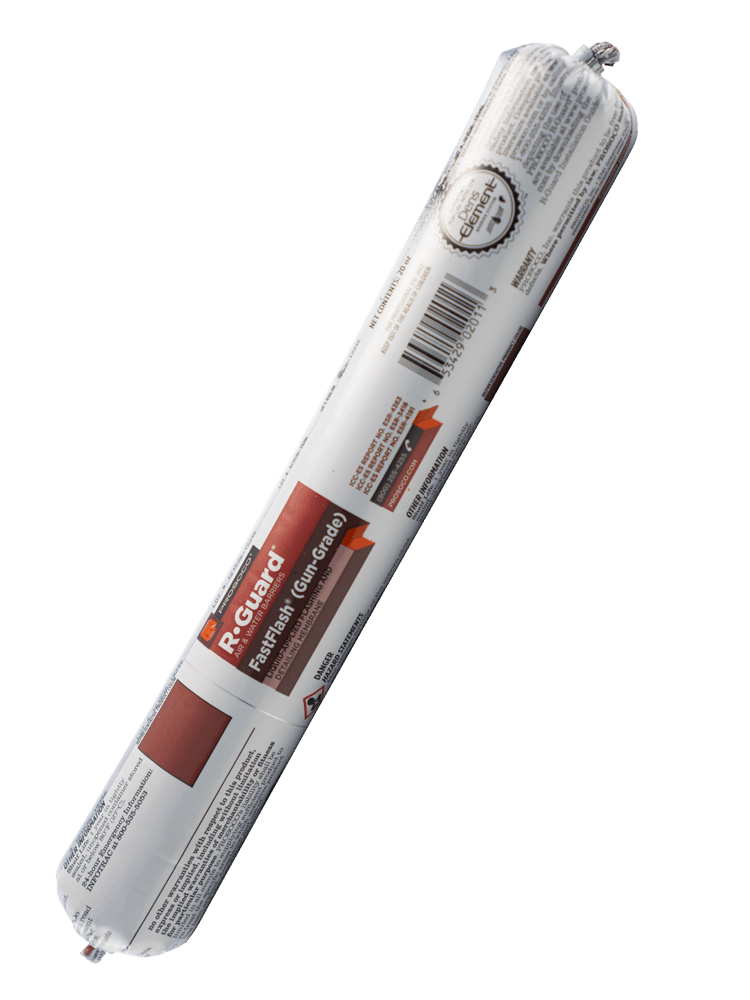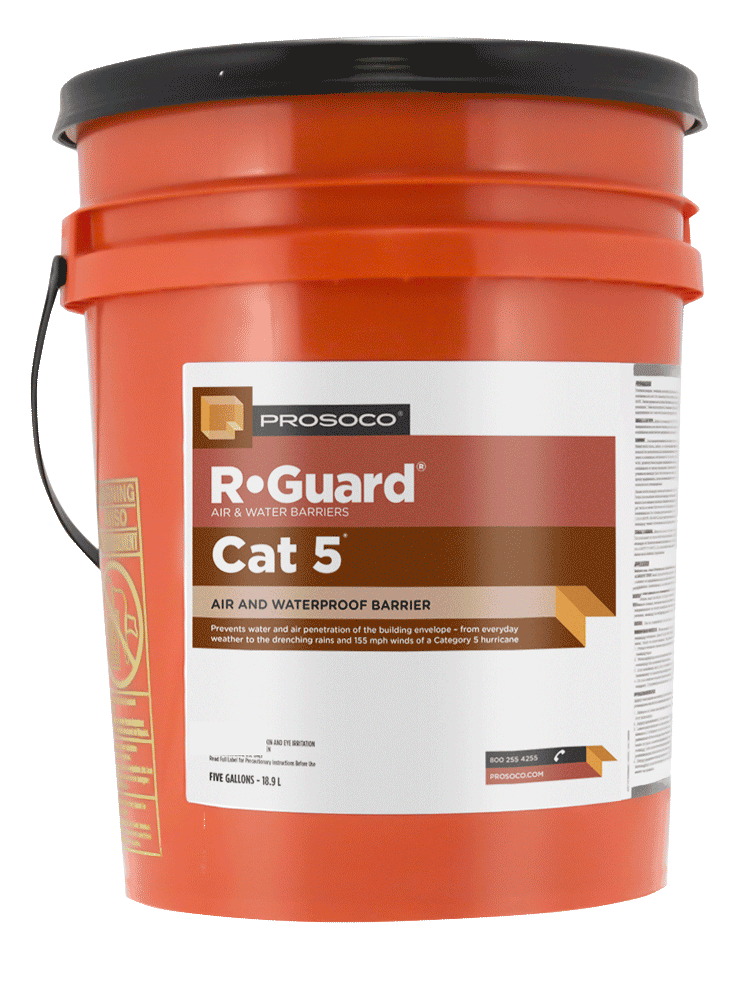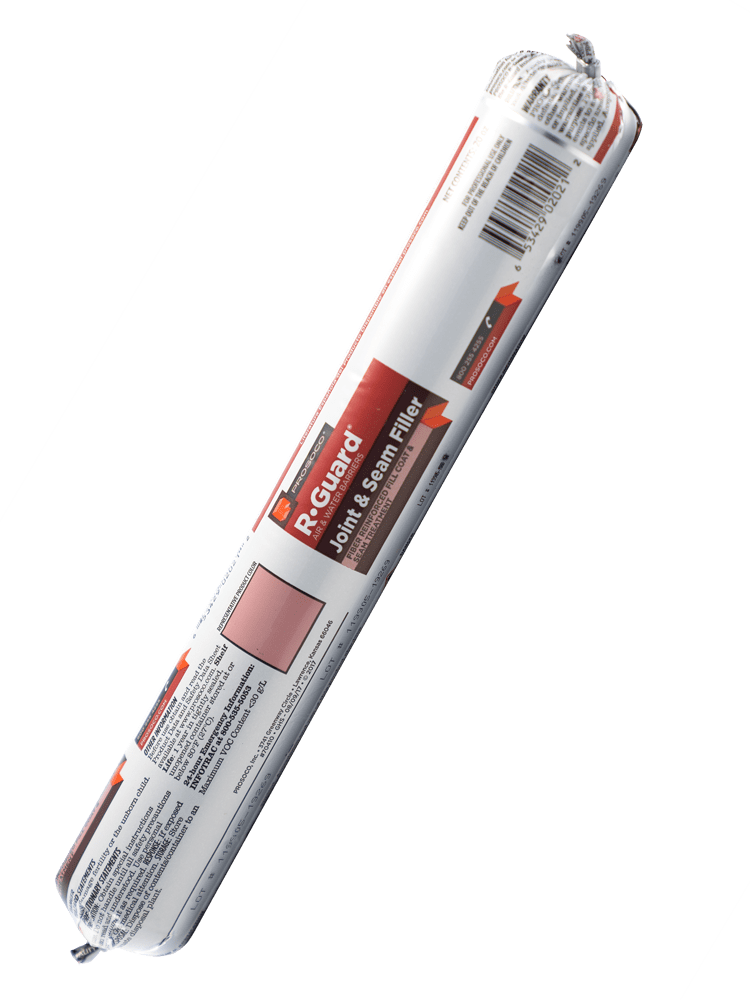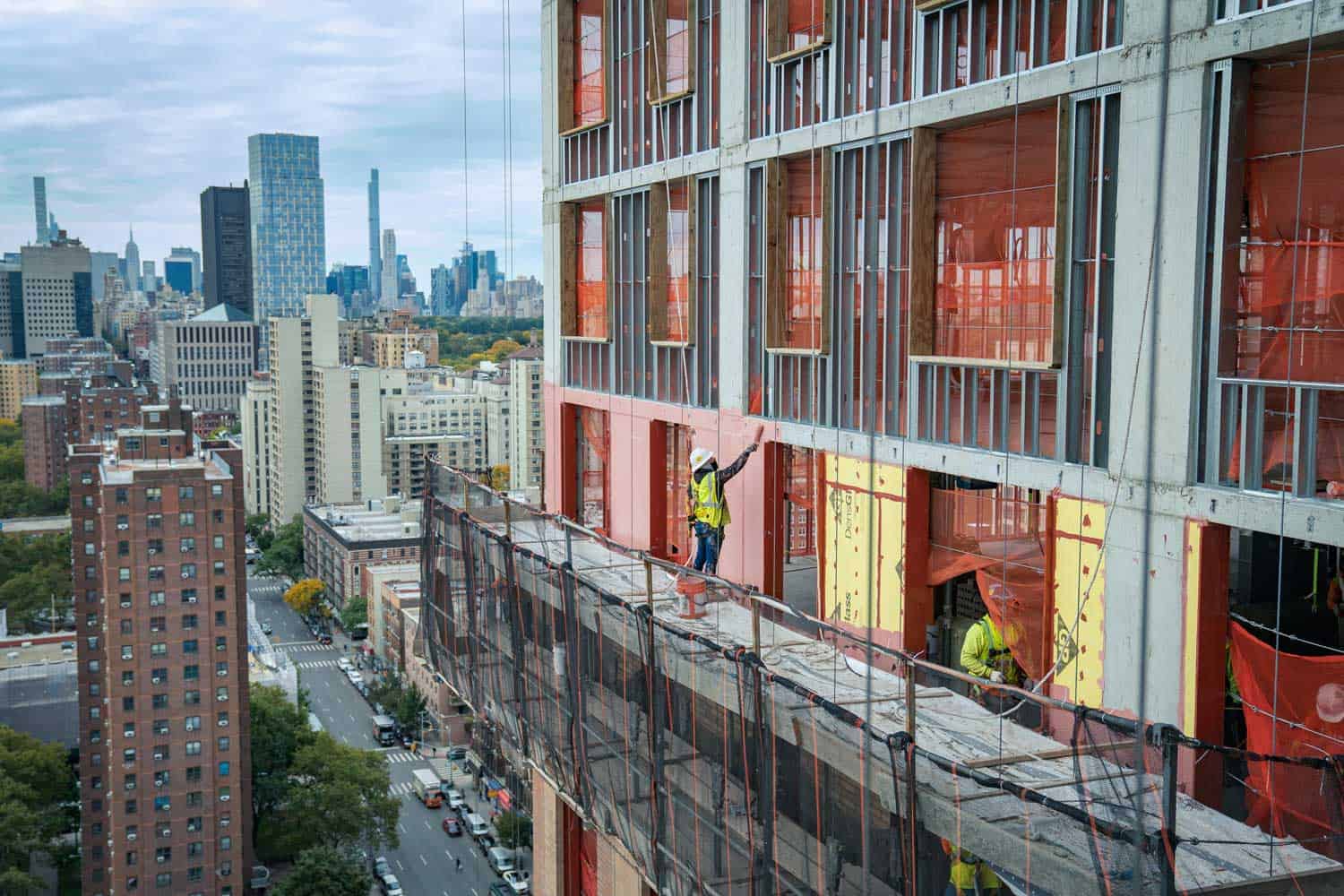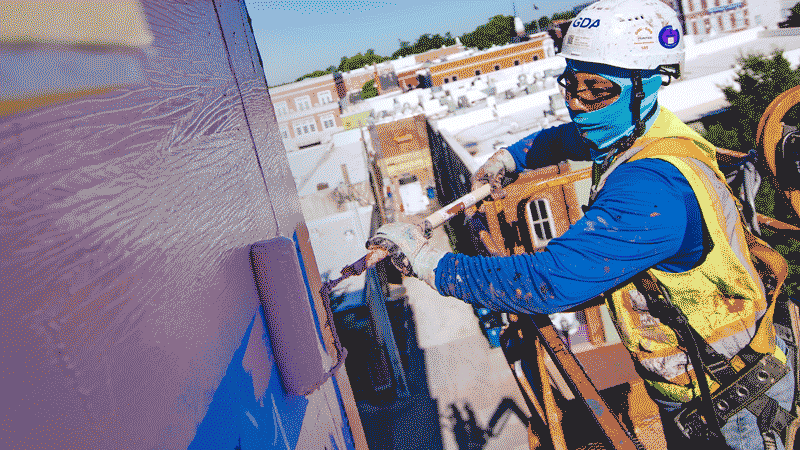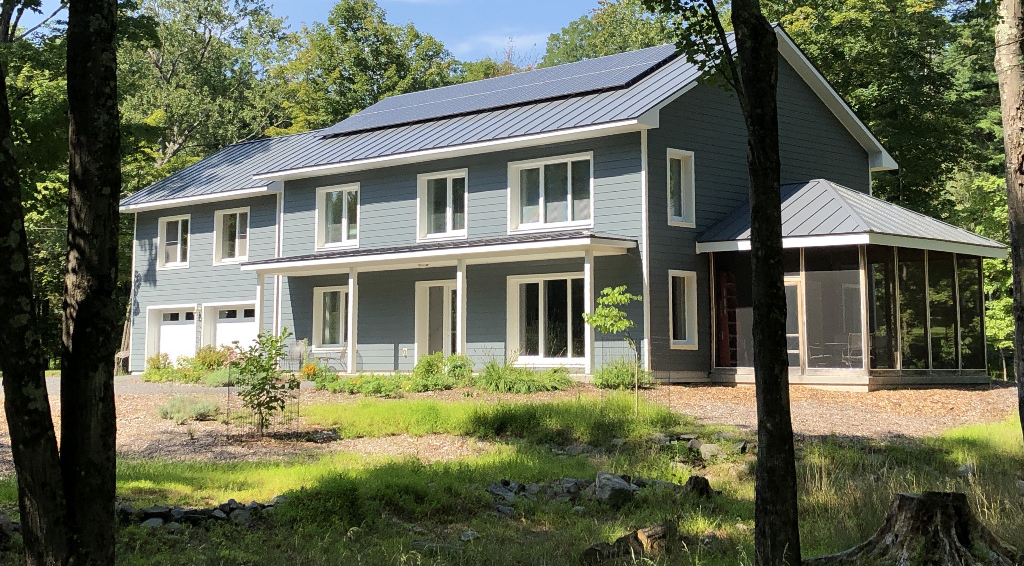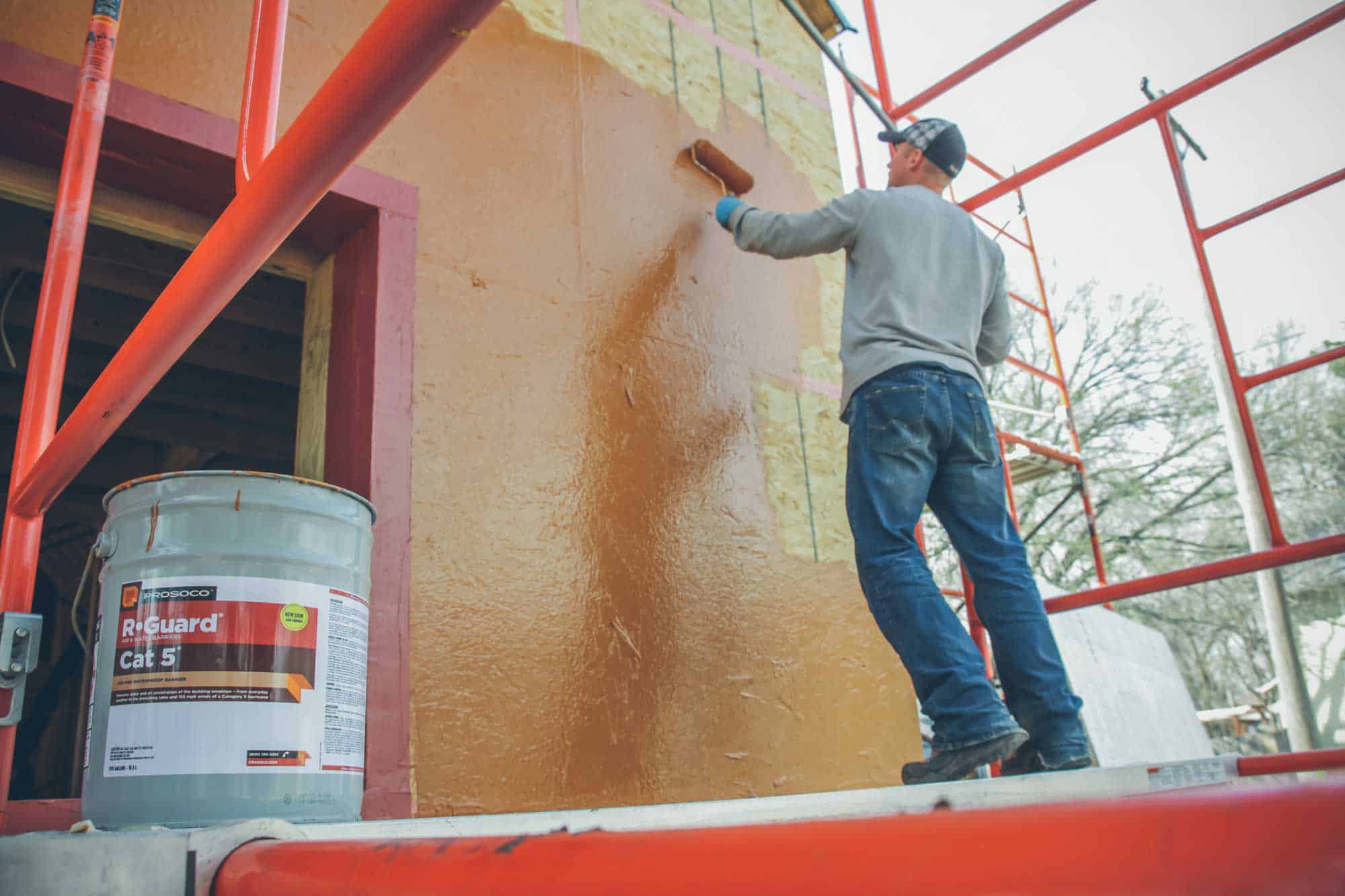BLOWER-DOOR TEST PASSED ON ATTEMPT #1
Rainy weather was rendered a non-factor for Oregon’s Karuna House, causing zero delays as the crew used a fluid-applied air barrier on damp plywood. The air barrier installation on this Passive House residential project went faster than planned and took less manpower than expected with PROSOCO’s R-Guard air and water barrier products.
When it was conceived in 2012, the Karuna House aimed to do something no other home had before — achieve certification with Passive House, LEED Platinum and Minergie-P-ECO.
It would go on to do so, with help from energy-focused strategies for its foundation, wall assembly, windows, doors and mechanical systems. Today this luxury residence in Yamhill County, Ore., still enjoys the moniker of the “world’s greenest home.”
But it wasn’t an easy undertaking to earn that title. It took many thoughtful decisions on materials and processes.
For the building envelope, the team at Hammer & Hand, the project’s builder, knew that Passive House standards of energy efficiency required a waterproof barrier system that would stop air and water movement while also remaining vapor-permeable.
“Considering the complexity of the structure, I didn’t think the house would pass the air-tightness test on our first attempt.”
Weather be damned
In the notoriously rainy climate (Yamhill County is just southwest of Portland), it seemed inevitable that the Karuna House would be erected in wet conditions.
So it really mattered that PROSOCO’s FastFlash, a flashing membrane for rough openings, and Cat 5, a primary air and water barrier for walls, could be applied to damp surfaces. Skylar Swinford, then a project manager for Hammer & Hand, said another big plus was the vapor permeability, because it allowed the damp surfaces to dry out even after being coated with FastFlash.
How to apply Joint & Seam Filler

With a peel-and-stick product or any other exterior air and water barrier, there would have been delays while waiting for the walls to dry out.
“Installing a vapor-permeable peel-and-stick on wet wood throttles the wood’s drying potential and would have slowed the construction process and added cost for mechanical dehumidification,” Swinford said.
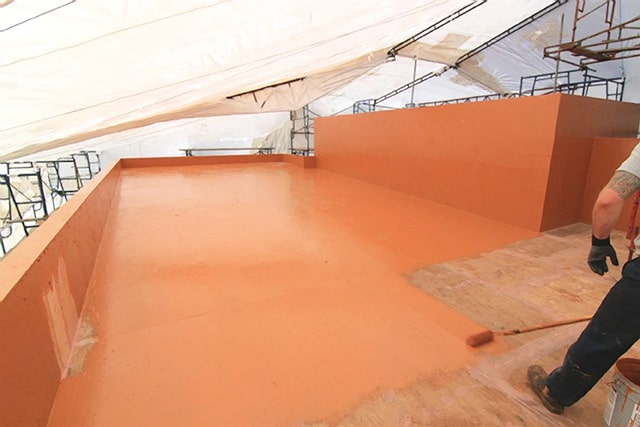
Just apply it over everything
Since the house couldn’t afford any air leaks, period, Hammer & Hand installed FastFlash and Cat 5 everywhere — even in places it doesn’t usually go, like the roof, over parapet walls and the undersides of cantilevered decks.
“We didn’t want to take any chances with the air-tightness of the building enclosure,” Swinford said.
Natalie demonstrates how to install FastFlash

Better than peel-and-stick
Though Karuna House is a residence, its design by Holst Architecture includes features found in commercial buildings, such as cantilevered decks, parapet walls and structural steel. There are also plenty of corners, turns, intersections, seams and joints — complexity which would turn peel-and-stick or fabric wrap installation into a nightmare, even if the walls had a chance to dry out, Swinford said.
In fact, he said, the air barrier installation went faster than planned and took less manpower than expected, even though they installed FastFlash in more places than usual.
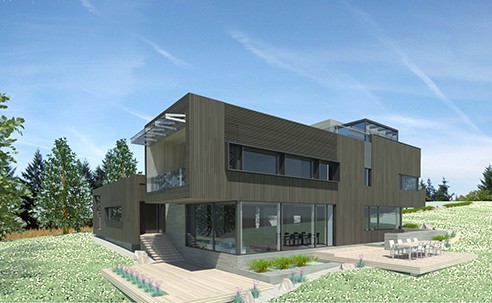
The extra effort paid off as a preliminary blower door test demonstrated the house’s air-tightness at 99.9 percent, even as the applicators were still spot-sealing the house’s 14,000 square feet of air barrier surface.
“We pressurized the house to 200 Pascals (about a 40-mph wind load) and filled it with fog from a theatrical fog machine,” Swinford said. “Then we watched to see where the fog escaped.”
“There were only two places where we had leaks in the structural sheathing. Both were in areas where we had not finished the FastFlash application. Since we hadn’t finished sealing, I was surprised. Considering the complexity of the structure, I didn’t think the house would pass the air-tightness test on our first attempt.”
![]()
How to install R-Guard Cat 5

PRODUCTS USED ON KARUNA HOUSE

Apply to damp substrates; save time and money
Fluid-applied R-Guard products containing silyl-terminated polymer (STP) technology (including Cat 5, FastFlash and Joint & Seam Filler) offer several advantages for project teams who want to meet energy efficiency goals and stay on schedule.
These products:
- Can be applied to damp substrates
- Are vapor-permeable to allow vapor and moisture to escape the building envelope
- Contain 99% solids to expand and contract with all rough opening components
- Are solvent-free, isocyanate-free, and phthalate-free
- Are easy-to-gun, spread, tool and roller-apply
- Comply with all VOC regulations
- Are Red List-compliant
